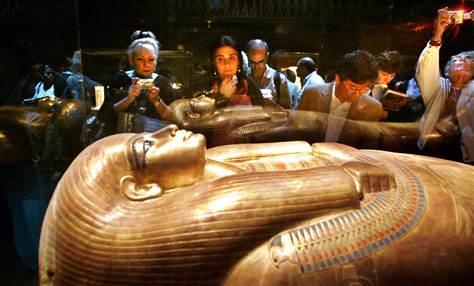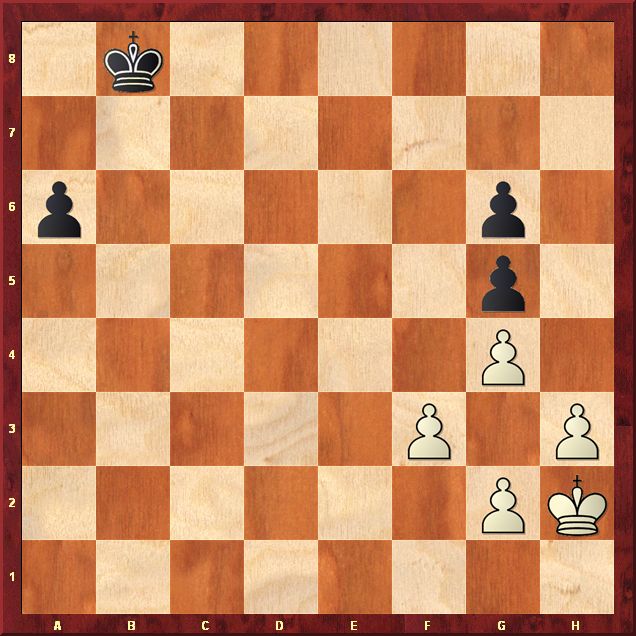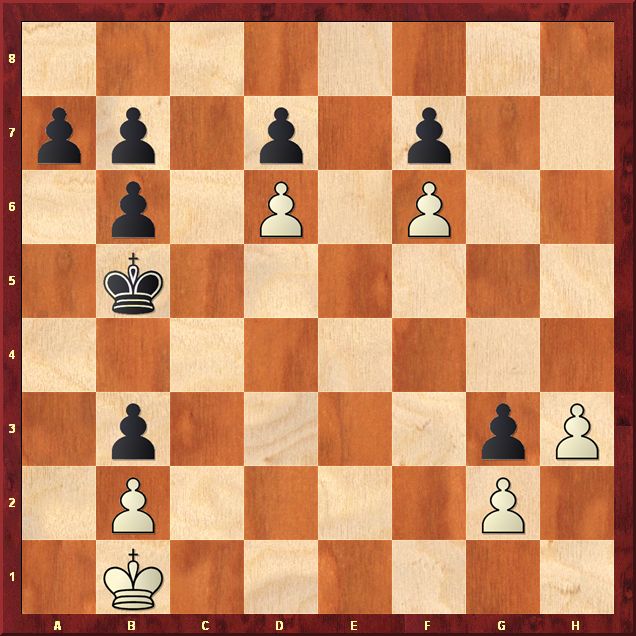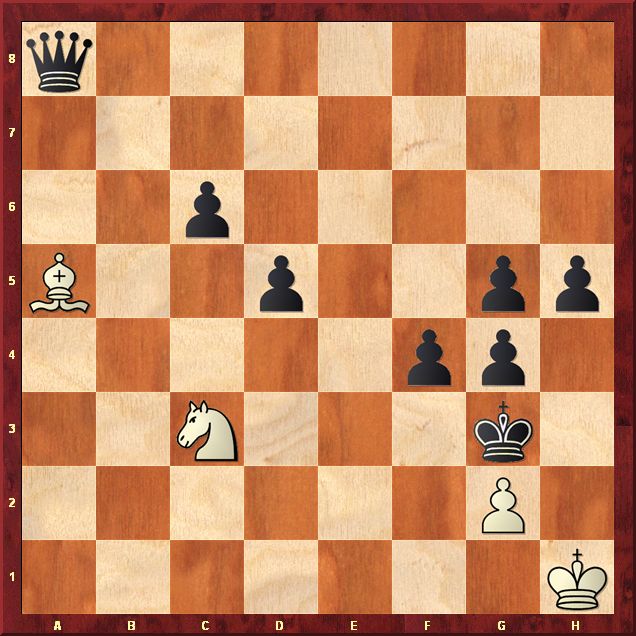
Ric Francis/AP
Last week we invoked memories of King Tut, presenting two chess compositions in which the black king is mated, surrounded by eight black pawns. You can find the solutions at the end of this column. This week we present a slightly different "King Tut motif. " Entombing the king in chess studies is usually done at the edge of the chessboard and often leads to spectacular stalemates. It can save draws in tournament games.
Puzzle #1
A simple king tomb was created by the Austrian chess master, theoretician and writer Johann Berger in his important work on endgames, Theorie un Praxis der Endspiele, published in 1890.
Johann Berger

White draws
SOLUTION:
1.f4! (1.h4? gxh4 2.f4 Kc7 3.f5 Kd7! black wins.; 1.Kg3? a5 black wins.) 1...Kc7! (1...gxf4? 2.h4 white wins; 1...a5? 2.h4! gxh4 [2...a4 3.h5 gxh5 4.fxg5 white wins] 3.f5 gxf5 4.g5+-) 2.fxg5! (2.f5? Kd7;
2.h4? Kd7) 2...a5 3.Kg3 (3.h4? Kd7 4.h5 Ke7) 3...a4 4.Kh4 a3 5.g3 a2 stalemate.
Note that in the replay windows below you can click either on the arrows under the diagram or on the notation to follow the game.
Puzzle #2
The German composer Hans Geiger also used the King Tut motif. Can the black king find a safe retreat? What can white do about it? The hint? Troika! Published in the Deutsche Schachzeitung in 1920, the idea was later tackled by other composers, including Richard Reti.
Hans Geiger

White wins
SOLUTION: The black king can't catch the h-pawn, but he can use his pawns to create a stalemate. White has to underpromote to knights to avoid stalemates.
1.h4 a5 2.h5 Ka4 3.h6 b5 4.h7 b4 5.h8N! b5 6.Ng6 fxg6 7.f7 g5 8.f8N! g4 9.Ne6 dxe6 10.d7 e5 11.d8N! e4 12.Nb7 [or 12.Ne6 ] 12...e3 13.Nc5 mate.
Puzzle #3
The dazzling study by the French chess master, composer and journalist, Frederic Lazard, could be called "double-entombing" since both kings get buried during the solution. Created 65 years ago, this work leaves even today's computers wondering what is going on. It is a victory of human spirit. Bravo, Monsieur Lazard!
Frederic Lazard
L'Italia Scacchistica, 1946

White draws
SOLUTION:
1.Ne4+! Kh4 (1...dxe4? 2.Be1 mate) 2.Ng3!! (An incredible sacrifice, threatening 3.Nf5 mate.) 2...Qf8 (2...Kxg3? 3.Be1 mate; 2...fxg3 3.Bb6! leads to the main variation.) 3.Be1! (Threatening 4.Nf5 mate again.) 3...fxg3 (The black king is entombed and can't help the black queen.) 4.Bf2!! (The sacrifice of the second piece is astonishing and leads to stalemates. At the same time, the bishop on the diagonal g1-a7 stops the black pawns.) 4...d4 (4...gxf2 5.g3+! Kxg3 or 5...Kh3 stalemate; 4...Qxf2 stalemate; 4...c5 5.Bxc5 Qxc5 stalemate.) 5.Bxd4 c5 6.Bxc5 Qf1+ (6...Qxc5 stalemate.) 7.Bg1 Qf2 (Staying on the first rank results in a stalemate.) 8.Bxf2 gxf2 9.g3+ Kxg3 stalemate.
Solutions from the last column King Tut in Chess Puzzles:
Note that in the replay windows below you can click either on the arrows under the diagram or on the notation to follow the game.
